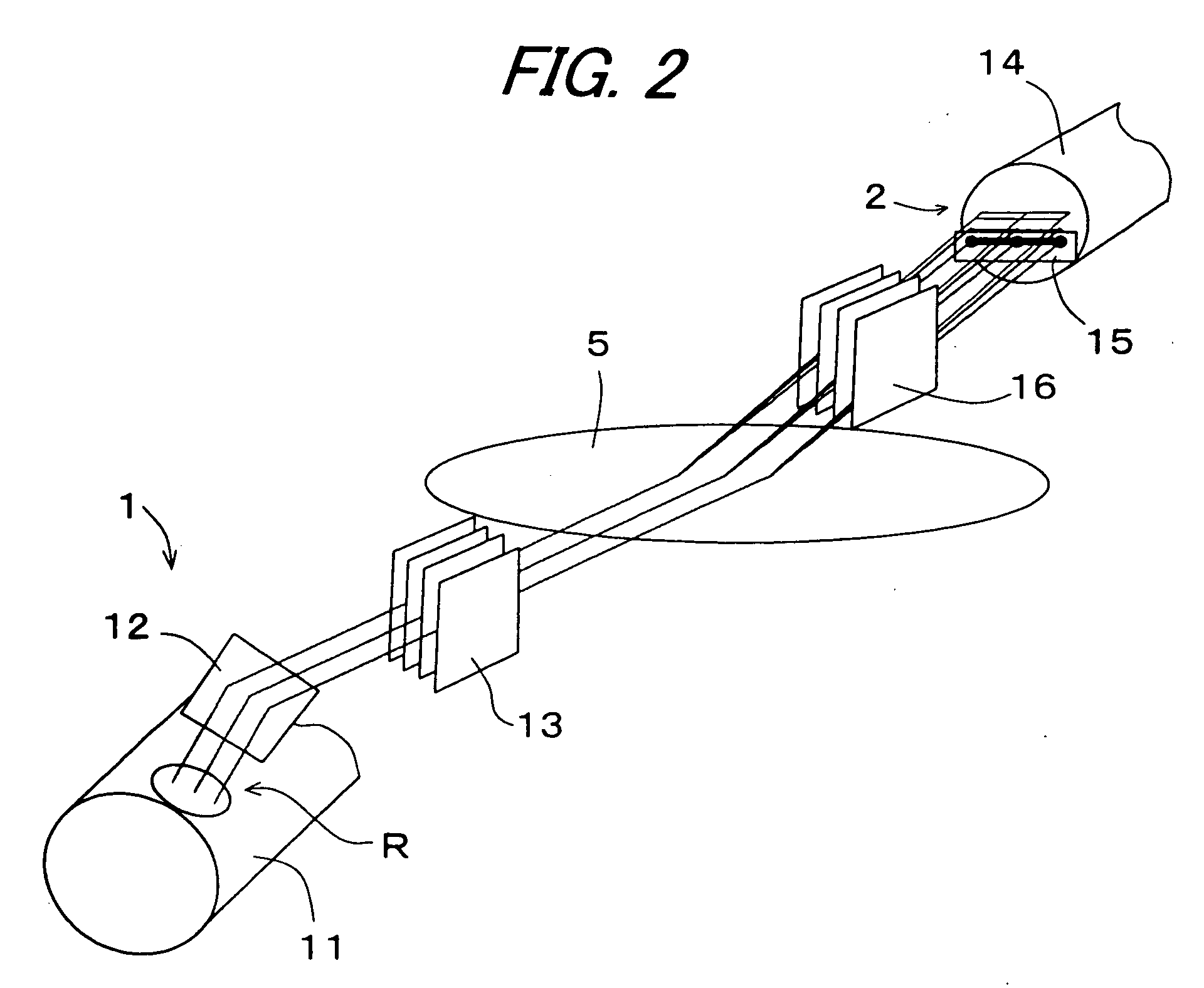Equipment for measuring distribution of void or particle size
- Summary
- Abstract
- Description
- Claims
- Application Information
AI Technical Summary
Benefits of technology
Problems solved by technology
Method used
Image
Examples
embodiment 1
[0089]FIG. 2 shows the concrete structure of the first embodiment of the pore-size distribution measurement apparatus. The X-ray generating means 1 is provided with a linear focus X-ray tube 11; a spectroscope 12; and a solar slit 13. The X-ray detecting means 2 is provided with a position-sensitive X-ray detector 14; a reflection X-ray blocking plate 15; and a solar slit 16. Note that the X-ray generating means 1 of this construction is designed to allow a substantially linear parallel light flux, composed of specific-direction components which are mutually parallel and exist in a specific wavelength or wavelength band, to enter the specimen 5 at an incident angle of θi.
[0090] In the linear focus X-ray tube 11, an electron emanating from a linear cathode is applied to an anode, and the resultant component is discharged obliquely from a window arranged in a direction such that it may appear to be narrower and longer. The X-ray R emitted from the X-ray tube 11 changes its optical pa...
embodiment 2
[0105] As compared with the apparatus of conventional design, the pore-size distribution measurement apparatus having a structure such as shown hereinabove allows measurement more accurately at higher speed. Now, consideration will be given to the detection efficiency in a region where the scattered component is low in X-ray intensity and large in scattering angle. As shown in FIG. 8, since a scattered component BL having a large scattering angle is spread out more widely compared to a scattered component BS having a small scattering angle, it follows that that portion BLt of the scattered component BL which passes through the solar slit 16 is smaller in quantity than that portion BSt of the scattered component BS which passes through the solar slit 16. That is, it has been found that scattered components having larger scattering angles are intensively blocked off by the solar slit 16 so as not to reach the X-ray detector 14.
[0106] Thence, in the second embodiment of the invention,...
embodiment 3
[0119] Although the first and second embodiments thus far described deal with the case where a light flux composed of mutually-parallel X-rays is applied to a specimen, the following technique has also been known. Shown in FIG. 14 is an X-ray converging optical system in which X-rays emitted spreadingly from the point focus X-ray tube 17 converge to a point by means of an X-ray condensing element 22 and an aperture 23. At the focusing point is placed the position-sensitive X-ray detector 14. Between the X-ray converging optical system and the position-sensitive X-ray detector 14 is placed a specimen M. With this structure, it is possible to ensure compatibility between the detection efficiency and the resolving power with respect to the scattering angle. FIG. 14 is a constitution diagram showing a constitution example of the X-ray converging optical system described just above.
[0120] Thence, in the third embodiment, the pore-size distribution measurement apparatus is constructed by...
PUM
 Login to View More
Login to View More Abstract
Description
Claims
Application Information
 Login to View More
Login to View More - R&D
- Intellectual Property
- Life Sciences
- Materials
- Tech Scout
- Unparalleled Data Quality
- Higher Quality Content
- 60% Fewer Hallucinations
Browse by: Latest US Patents, China's latest patents, Technical Efficacy Thesaurus, Application Domain, Technology Topic, Popular Technical Reports.
© 2025 PatSnap. All rights reserved.Legal|Privacy policy|Modern Slavery Act Transparency Statement|Sitemap|About US| Contact US: help@patsnap.com



